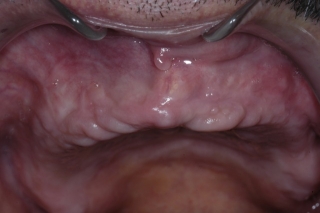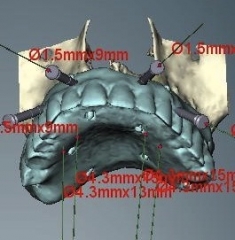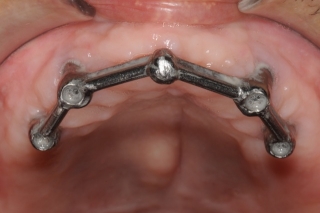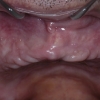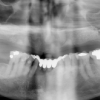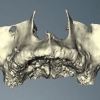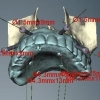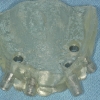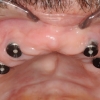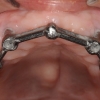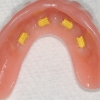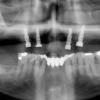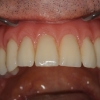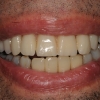The Story:
This patient was initially seen due to severely decayed and periodontally involved upper teeth which had to be extracted. The extraction sites were grafted to preserve the ridge for dental implants at a later time. He was given a full denture as a temporary prosthesis and he quickly realized how difficult it is to keep the denture in and use it comfortably. The solution presented was placement of at least 6 implants for support of a fixed prosthesis, but due to financial reasons, he selected the option of 4 dental implants with an overdenture.
Treatment:
CT scan guided implant planning was done for this patient. This involves taking a CT scan and then creating a 3-dimensional computer model where we could perform the surgery virtually and position our implants precisely and accurately where they need to be. The exact size and dimension of the dental implants were selected.
The computer model was then used to make a surgical guide which translated our computer work-up and implant positions to a plastic guide to be used for precise dental implants placement. Using this guide, the four dental implants were placed without a single incision and suture. Patient’s recovery was greatly improved with no pain or swelling after surgery. Often, we have the choice of placing immediate restorations on such implants providing patients with a fixed prosthesis right away. However, this patient did not want that and elected to wait for implants to heal before getting his final prosthesis. A bar-retained final denture was made which provided him with great stability and comfort to eat all types of food. He no longer needed denture glue or adhesives.
Photo Gallery
The keys to our success:
- Team approach by an oral surgeon and a prosthodontist, each specialized in dental implants
- Detailed cosmetic work up and diagnostics
- CT scan guided implant planning
- An accurate surgical guide made from the computer work up
- Precisely positioned dental implants
